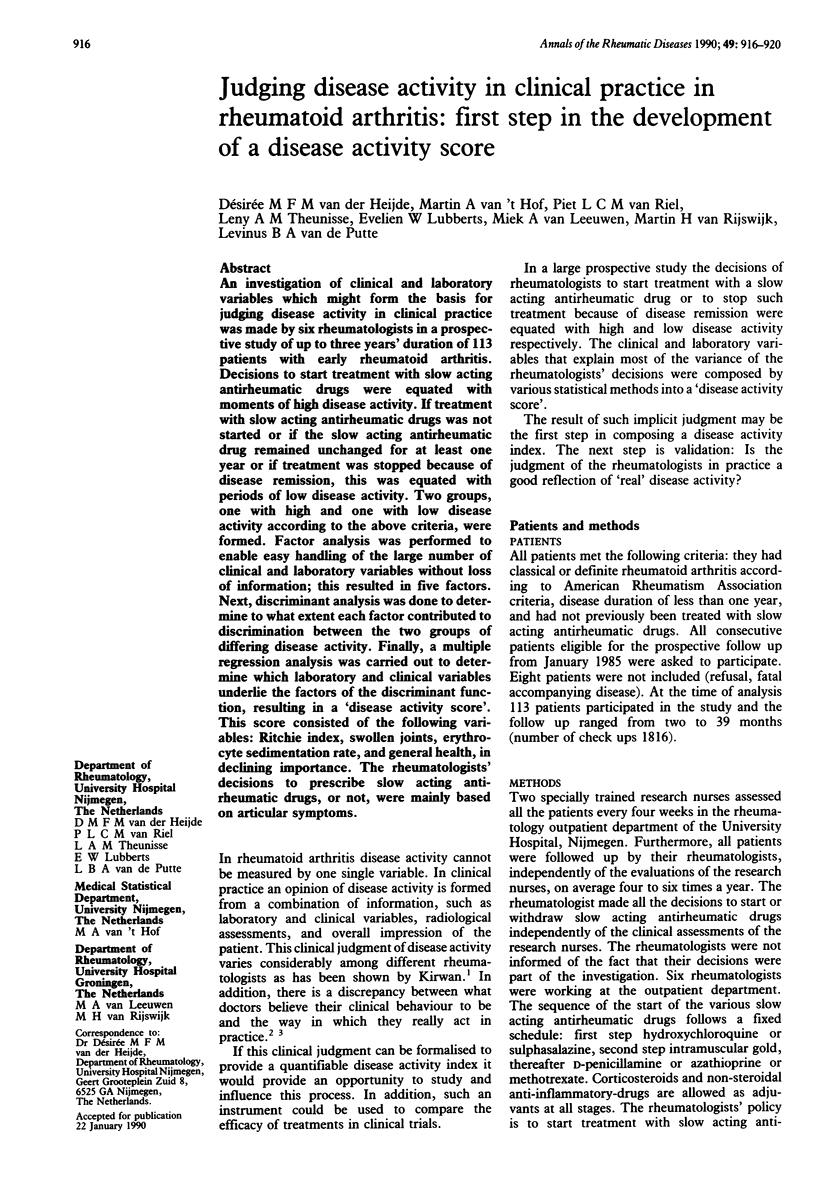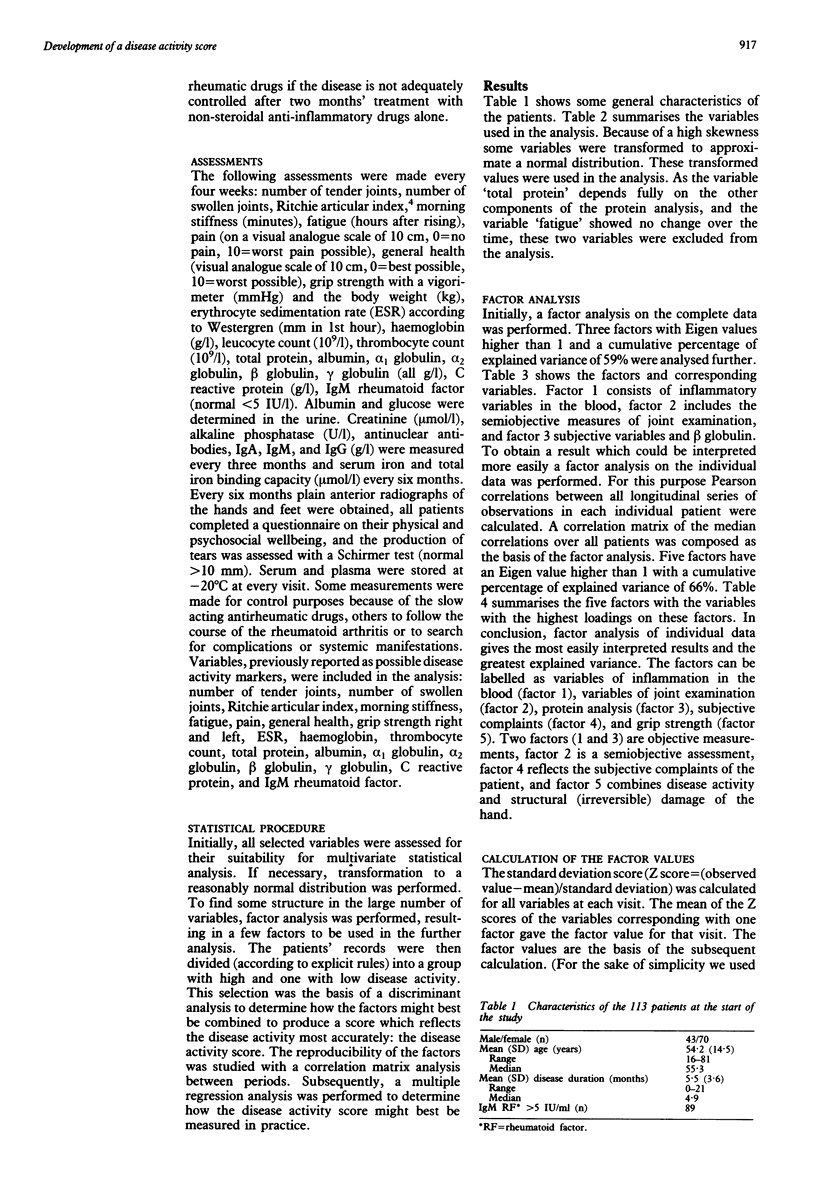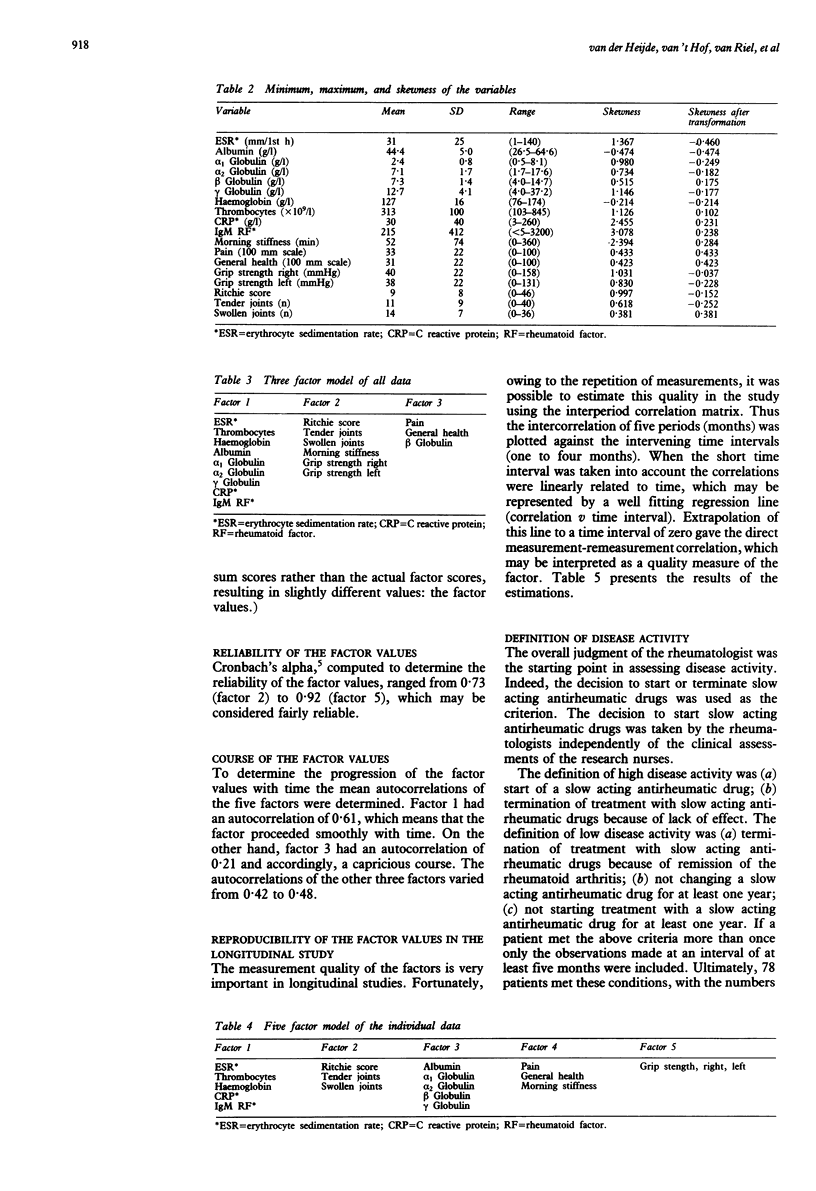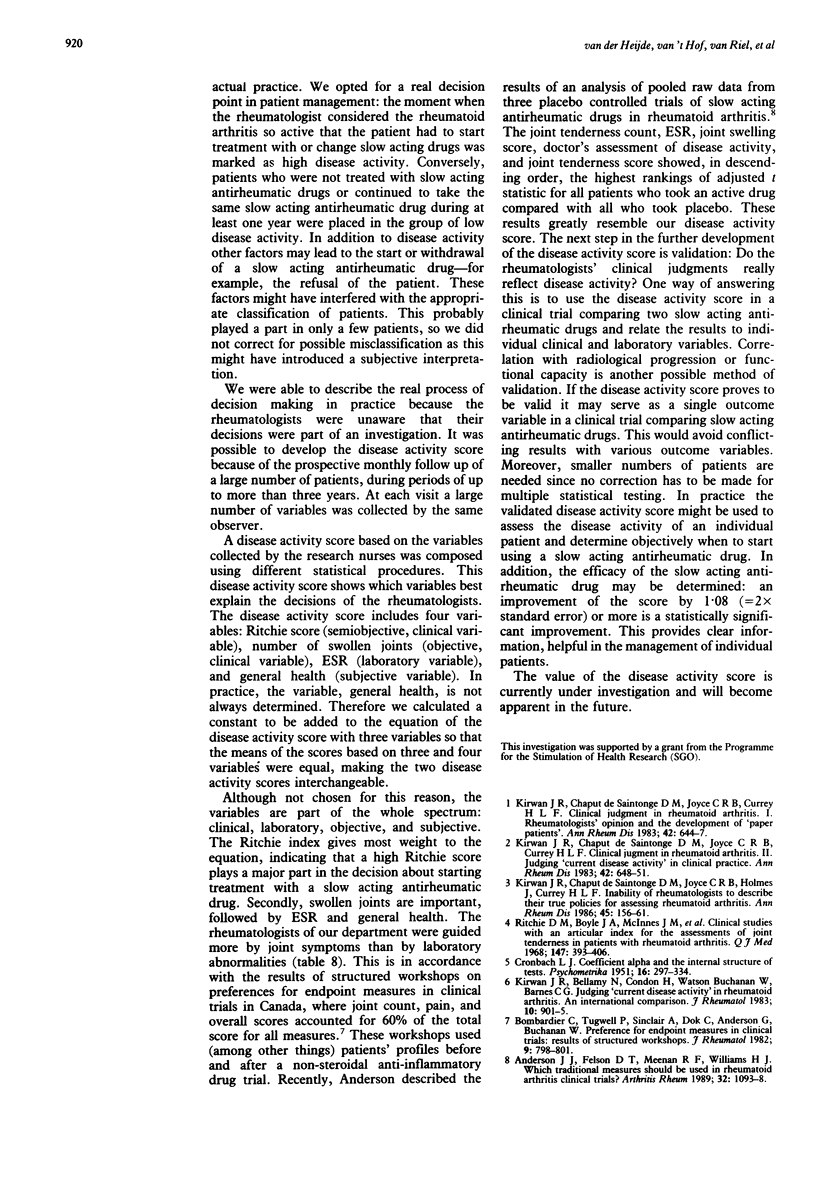Abstract
An investigation of clinical and laboratory variables which might form the basis for judging disease activity in clinical practice was made by six rheumatologists in a prospective study of up to three years' duration of 113 patients with early rheumatoid arthritis. Decisions to start treatment with slow acting antirheumatic drugs were equated with moments of high disease activity. If treatment with slow acting antirheumatic drugs was not started or if the slow acting antirheumatic drug remained unchanged for at least one year or if treatment was stopped because of disease remission, this was equated with periods of low disease activity. Two groups, one with high and one with low disease activity according to the above criteria, were formed. Factor analysis was performed to enable easy handling of the large number of clinical and laboratory variables without loss of information; this resulted in five factors. Next, discriminant analysis was done to determine to what extent each factor contributed to discrimination between the two groups of differing disease activity. Finally, a multiple regression analysis was carried out to determine which laboratory and clinical variables underlie the factors of the discriminant function, resulting in a 'disease activity score'. This score consisted of the following variables: Ritchie index, swollen joints, erythrocyte sedimentation rate, and general health, in declining importance. The rheumatologists' decisions to prescribe slow acting antirheumatic drugs, or not, were mainly based on articular symptoms.
Full text
PDF




Selected References
These references are in PubMed. This may not be the complete list of references from this article.
- Anderson J. J., Felson D. T., Meenan R. F., Williams H. J. Which traditional measures should be used in rheumatoid arthritis clinical trials? Arthritis Rheum. 1989 Sep;32(9):1093–1099. doi: 10.1002/anr.1780320907. [DOI] [PubMed] [Google Scholar]
- Bombardier C., Tugwell P., Sinclair A., Dok C., Anderson G., Buchanan W. W. Preference for endpoint measures in clinical trials: results of structured workshops. J Rheumatol. 1982 Sep-Oct;9(5):798–801. [PubMed] [Google Scholar]
- Kirwan J. R., Bellamy N., Condon H., Buchanan W. W., Barnes C. G. Judging "current disease activity" in rheumatoid arthritis--an international comparison. J Rheumatol. 1983 Dec;10(6):901–905. [PubMed] [Google Scholar]
- Kirwan J. R., Chaput de Saintonge D. M., Joyce C. R., Currey H. L. Clinical judgment in rheumatoid arthritis. I. Rheumatologists' opinions and the development of 'paper patients'. Ann Rheum Dis. 1983 Dec;42(6):644–647. doi: 10.1136/ard.42.6.644. [DOI] [PMC free article] [PubMed] [Google Scholar]
- Kirwan J. R., Chaput de Saintonge D. M., Joyce C. R., Currey H. L. Clinical judgment in rheumatoid arthritis. II. Judging 'current disease activity' in clinical practice. Ann Rheum Dis. 1983 Dec;42(6):648–651. doi: 10.1136/ard.42.6.648. [DOI] [PMC free article] [PubMed] [Google Scholar]
- Kirwan J. R., Chaput de Saintonge D. M., Joyce C. R., Holmes J., Currey H. L. Inability of rheumatologists to describe their true policies for assessing rheumatoid arthritis. Ann Rheum Dis. 1986 Feb;45(2):156–161. doi: 10.1136/ard.45.2.156. [DOI] [PMC free article] [PubMed] [Google Scholar]
- Ritchie D. M., Boyle J. A., McInnes J. M., Jasani M. K., Dalakos T. G., Grieveson P., Buchanan W. W. Clinical studies with an articular index for the assessment of joint tenderness in patients with rheumatoid arthritis. Q J Med. 1968 Jul;37(147):393–406. [PubMed] [Google Scholar]


